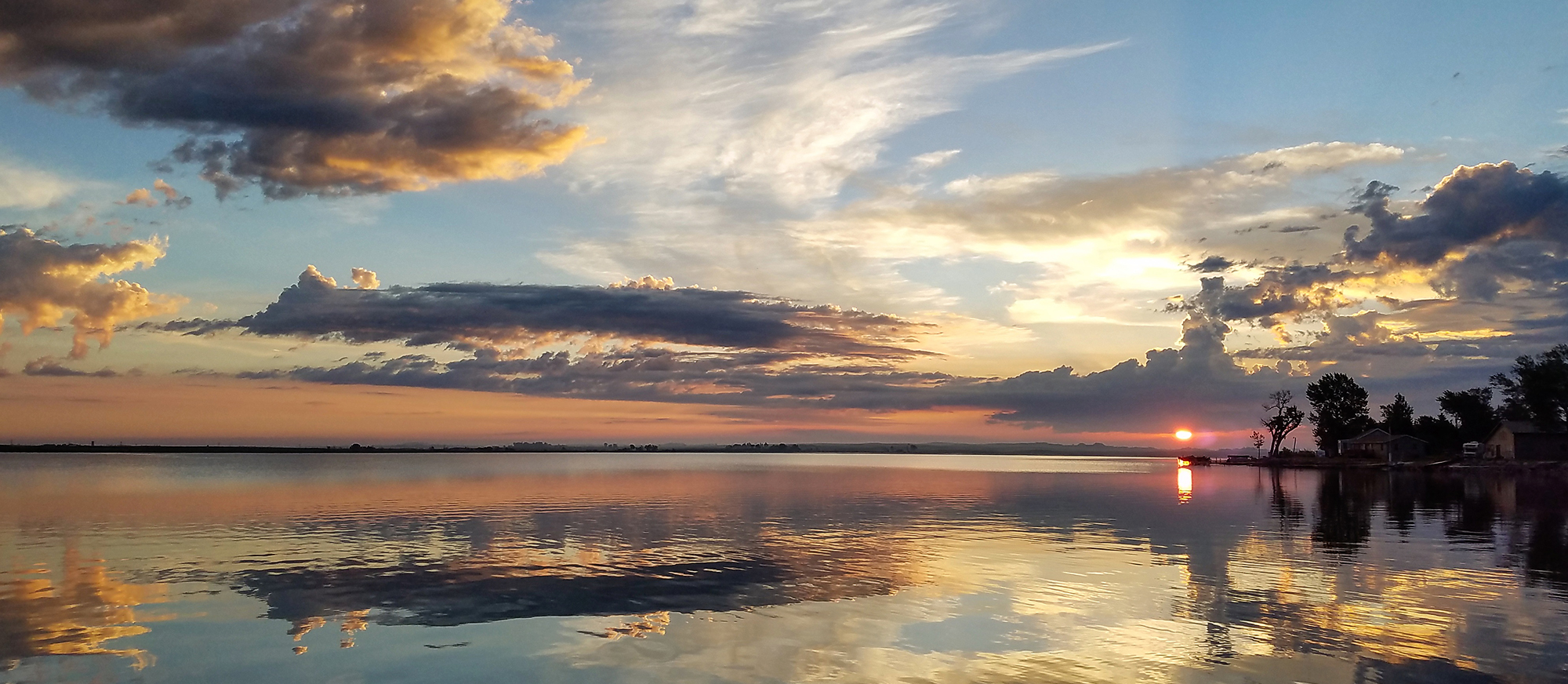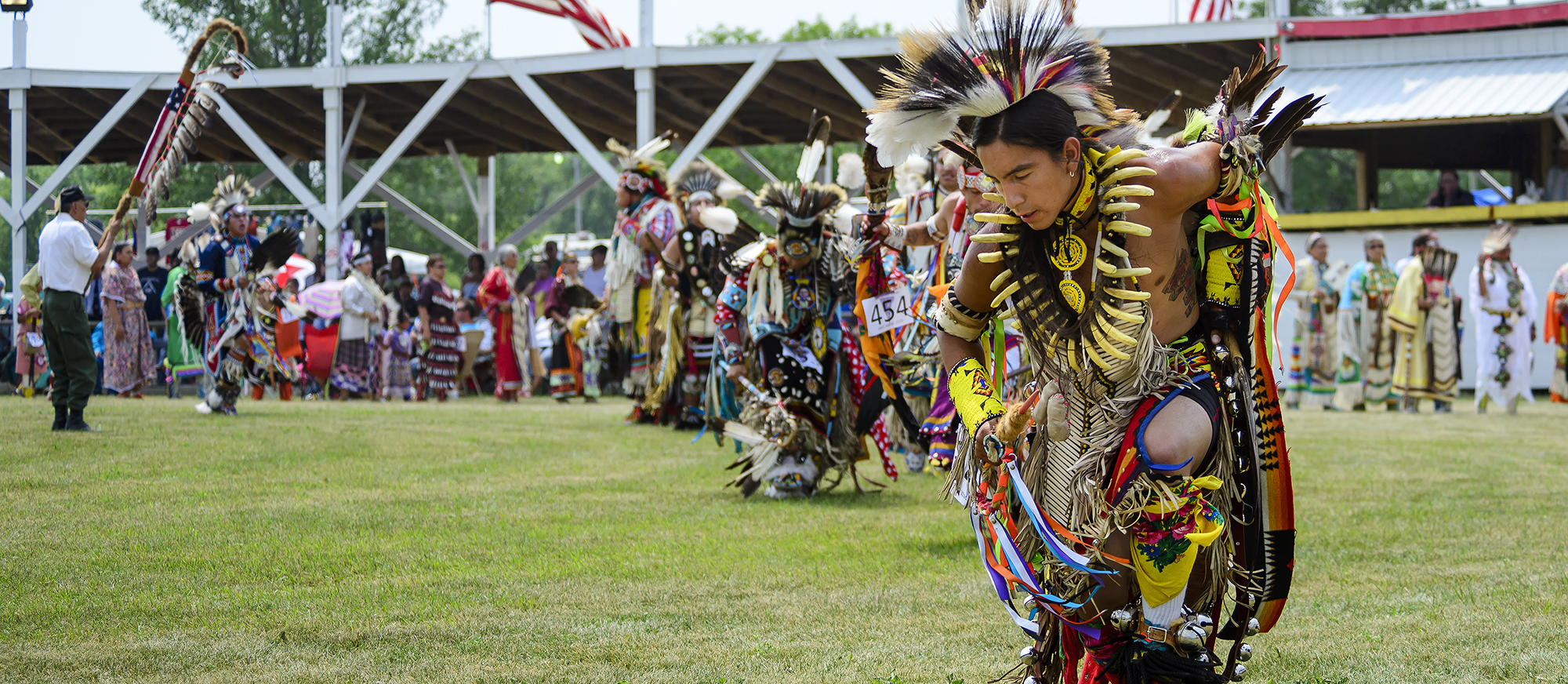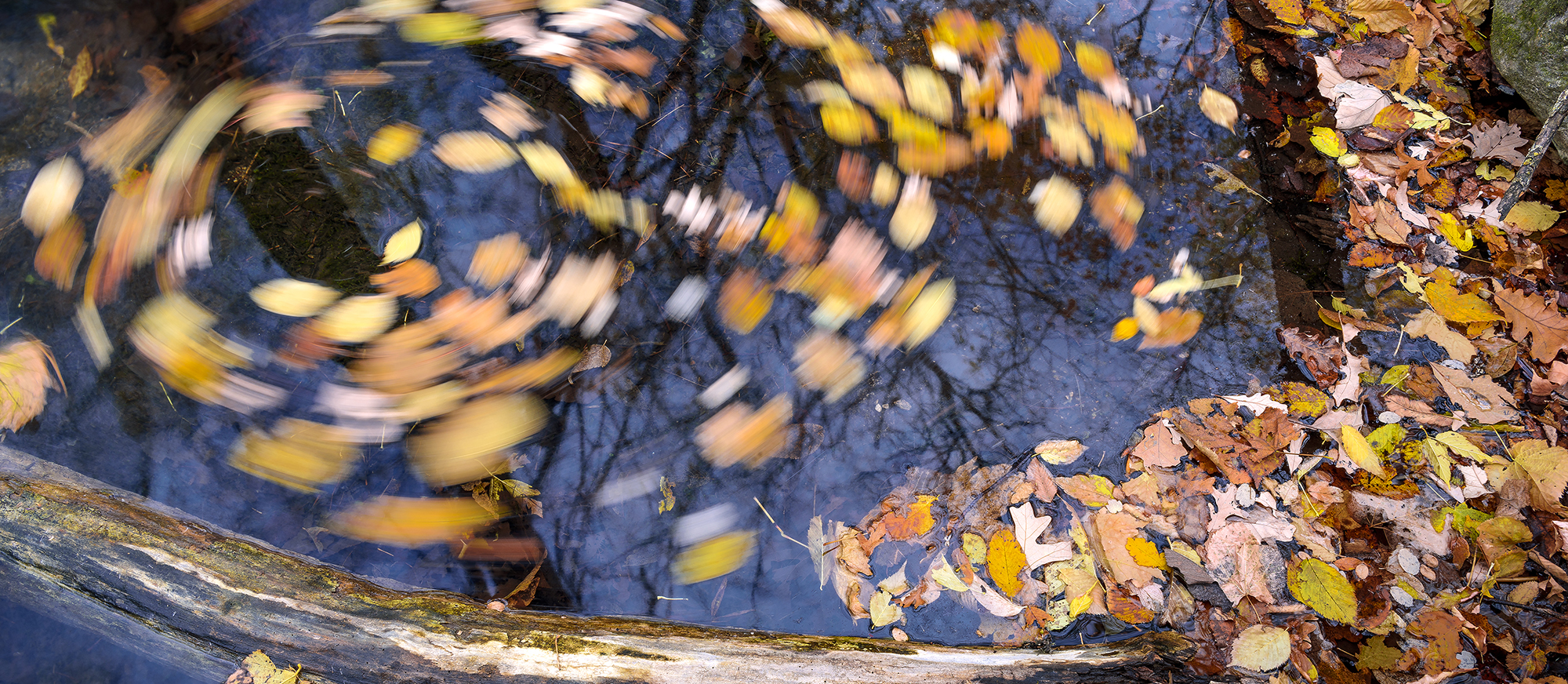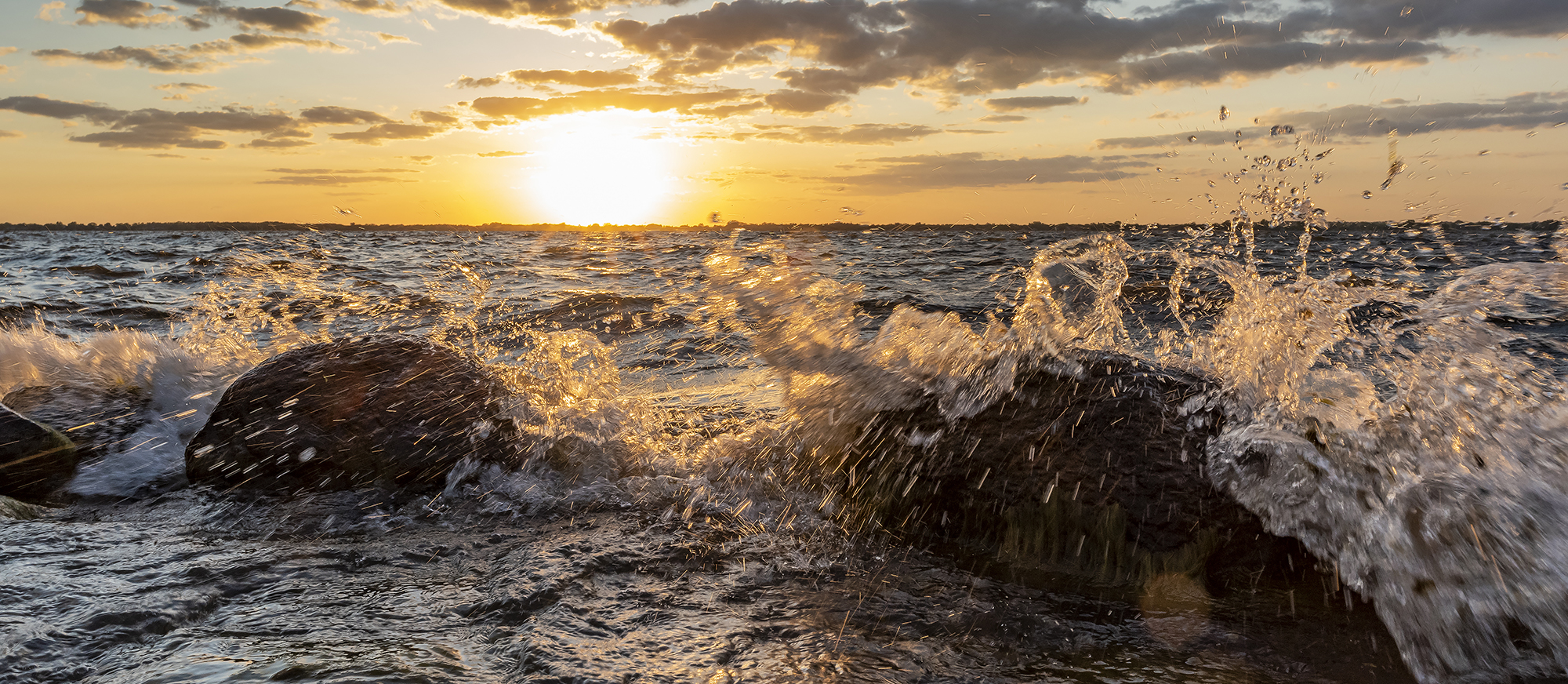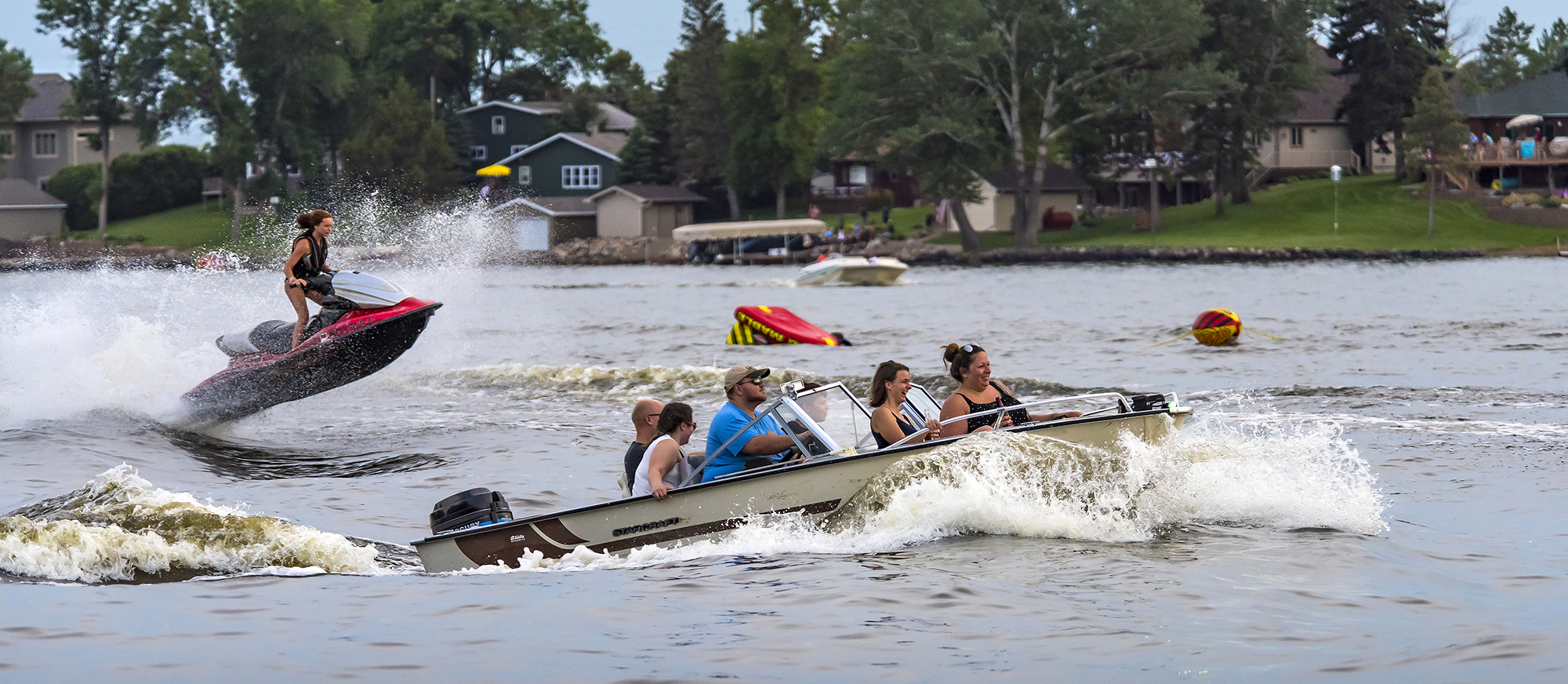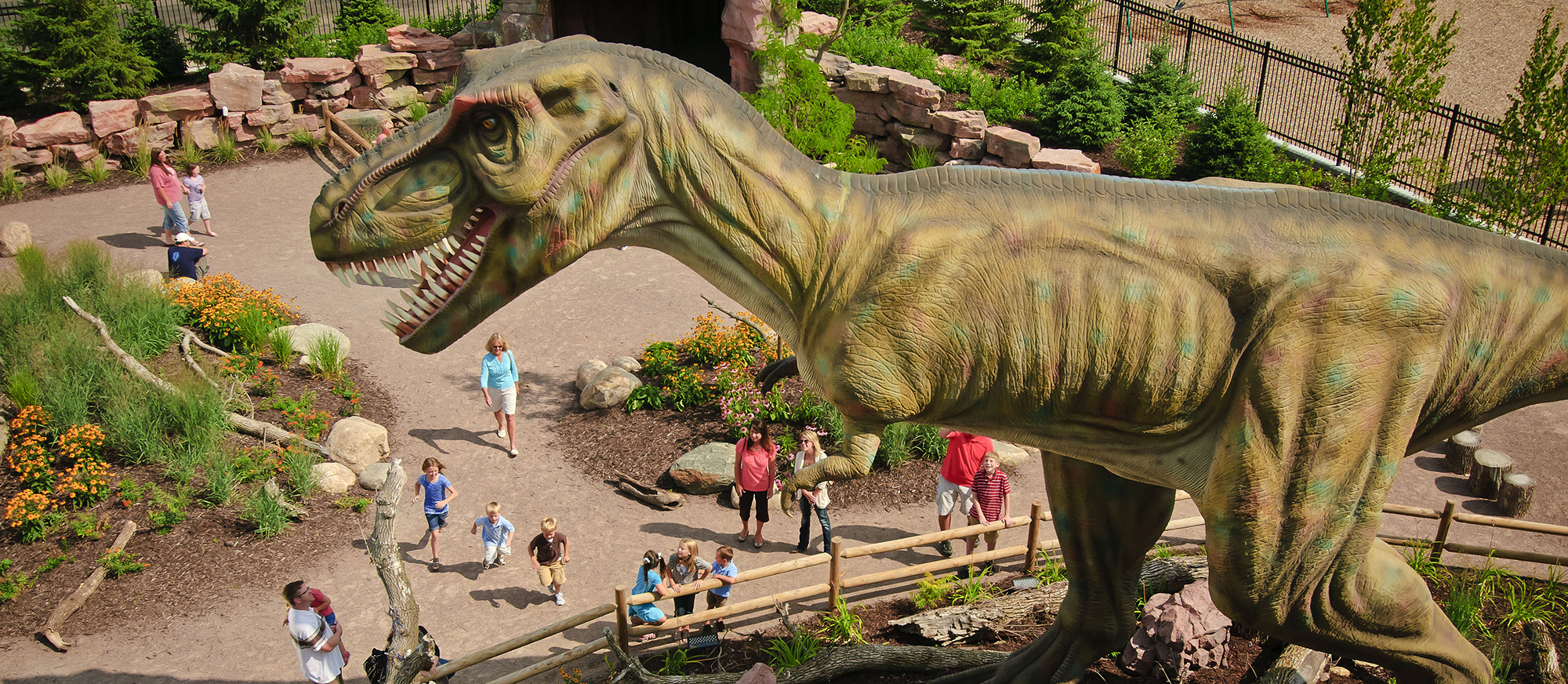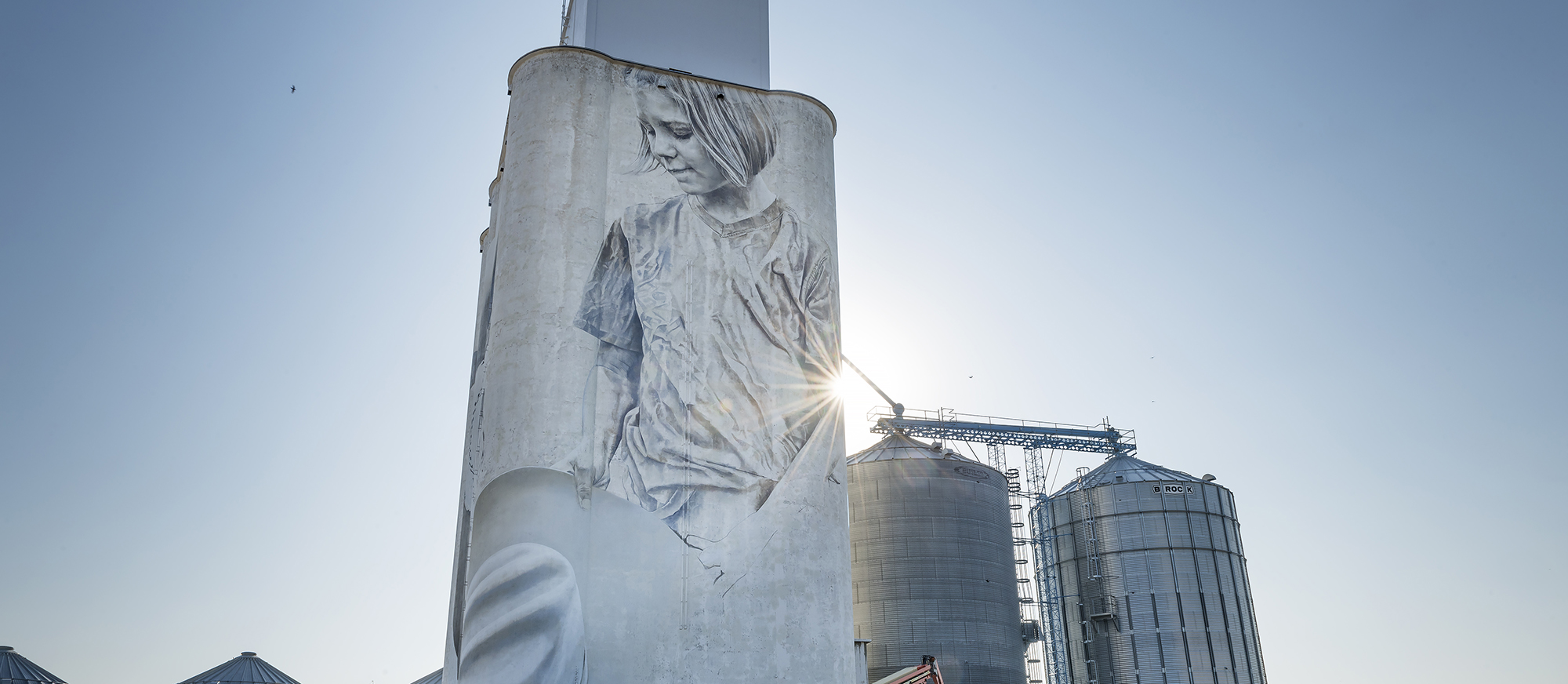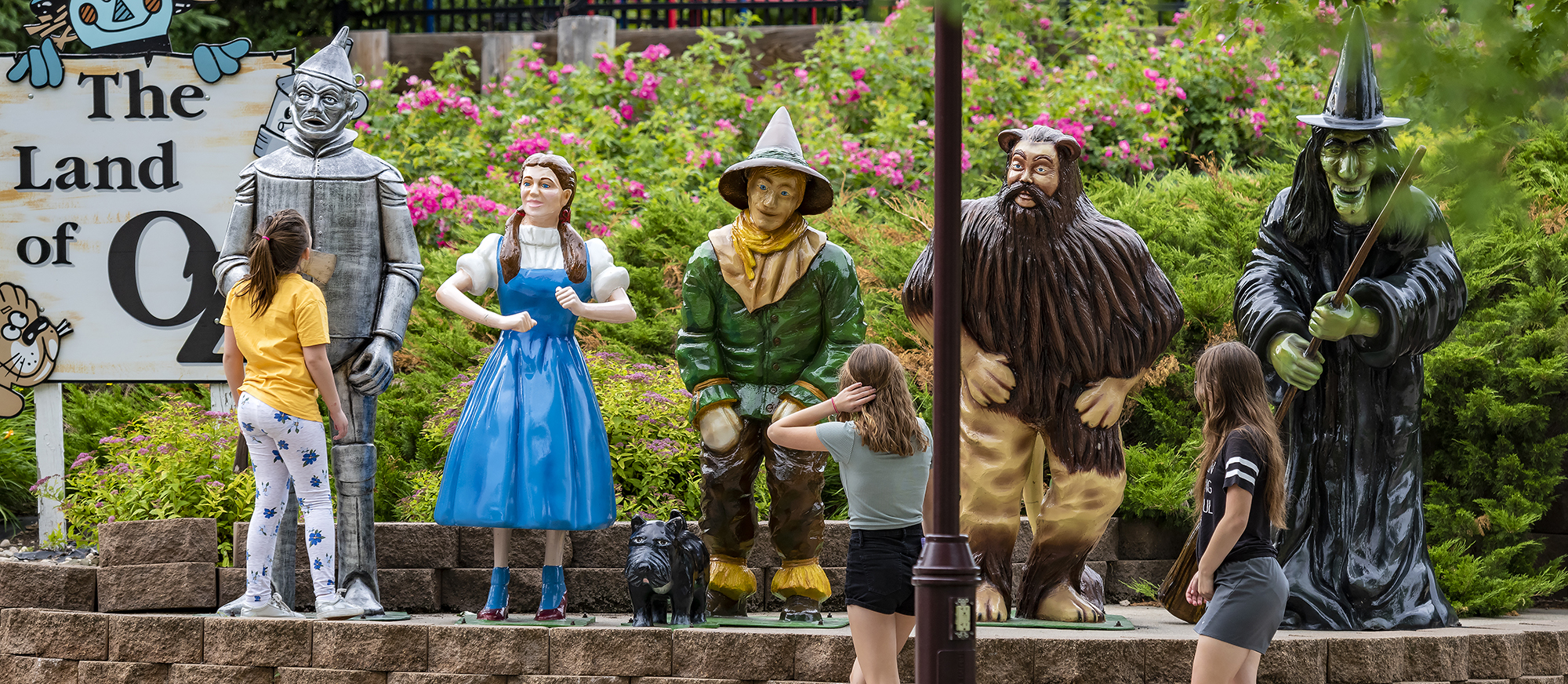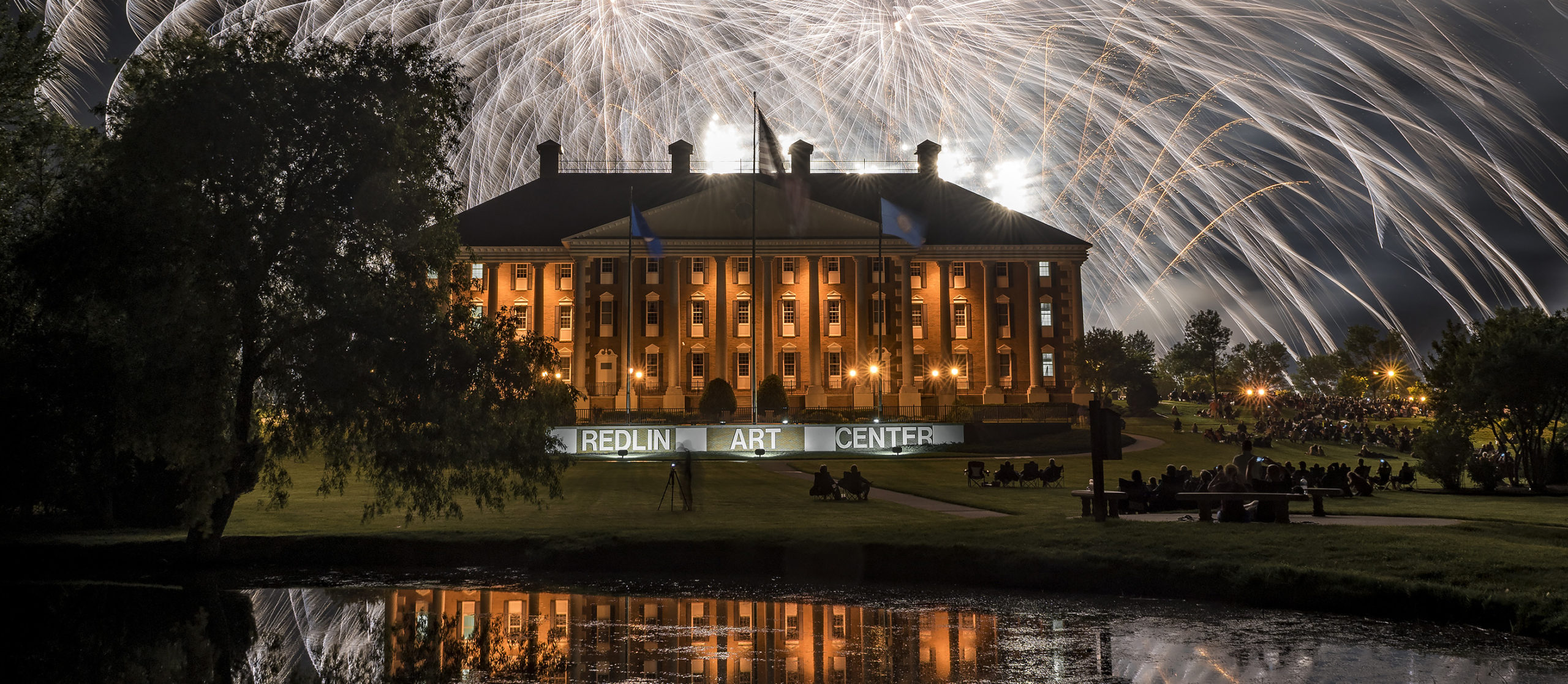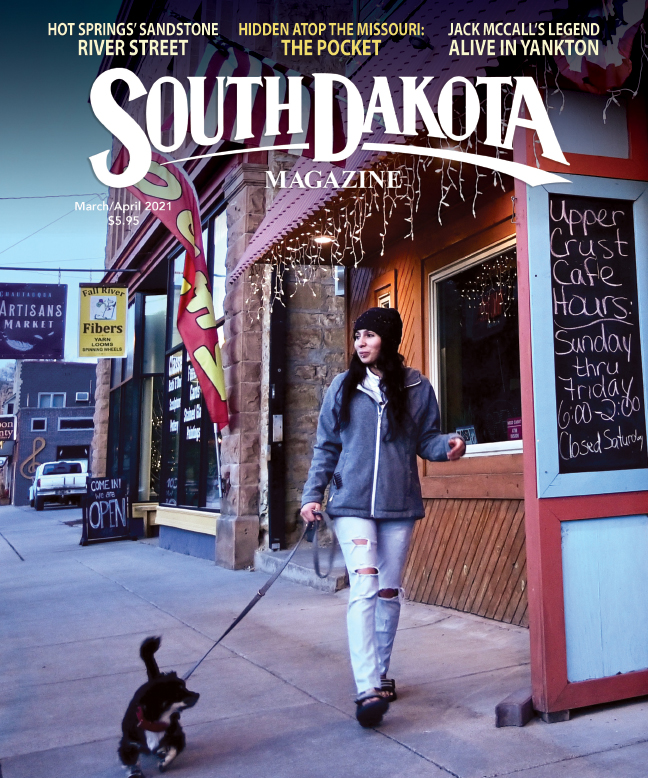
FUN FACTS

Learn why rodeo is South Dakota’s state sport by attending Flandreau Rodeo Days, Estelline Rodeo Days, or the Crystal Springs Rodeo in Clear Lake.

Immerse yourself in the world of Laura Ingalls Wilder. Tour the original school and homes of the Ingalls family, the Surveyors’ House and the Ingalls Home in De Smet.

See three states from the top of the the 75 ft. Nicollet Tower located just 3.5 miles west of Sisseton on Hwy. 10.
Welcome to Glacial Lakes!
Glacial Lakes: Take the Backroads
The clear blue lakes are perfect for fishing, birdwatching, hiking or any outdoor fun — and the waters are surrounded by forested hills, grasslands and farms. Your explorations are even more enjoyable as you experience the geology, history, legends, adventures and lively communities of South Dakota’s Glacial Lakes.
Legends: Before the White Man Came
The Sisseton Wahpeton Tribe has lived for generations in the Glacial Lakes country. (Sisseton translates to People of the Marsh.) The tribal headquarters and college at Agency Village — 7 miles south of Sisseton —features a main building shaped like four drummers. Visitors are welcome to explore nature on trails behind the college. Agency Village is also home to the Sisseton Wahpeton pow wow, the oldest in South Dakota and second oldest in the USA. The smaller Flandreau Santee Sioux Tribe, like the Sisseton Wahpeton, has roots in the Dakota people who were uprooted from Minnesota after broken treaties led to an 1862 uprising. The Santees’ headquarters is in the historic town of Flandreau.
Enemy Swim: And Other Legends
The tribes have stories that have been passed from generation to generation explaining the lore to five locations known as the “Legends of the Glacial Lakes and Prairies.” Learn how Enemy Swim Lake was given its name. Hear the story of the stranger who changed Sica Hollow from a once protected and peaceful Indian camp into an evil name and memory that remains mysterious. Visit the Maiden’s Isle on Lake Kampeska where the beautiful Minnecotah was held until her true lover rescued her. Listen to the sad story of forbidden love and Punished Woman’s Lake. Stories on these and other legends can be found here.
Some Waters Flow North
Nearly all of South Dakota drains into the Gulf of Mexico via the Missouri River, but the waters of the northeast corner flow north to the Red River Valley and onto Hudson Bay. The Continental Divide that separates the two watersheds begins north of Britton and generally follows Highway 10 to Browns Valley, a marshy valley midway between Lake Traverse and Big Stone Lake. Traverse flows north and Big Stone flows south. A sign on Britton’s Main Street denotes the unusual geographic feature, and the city’s Prayer Rock Museum has related exhibits. The Continental Divide, one of only five in North America, ranks among the most interesting and scenic features in a state known for geological variety.
Destination: Outdoor Fun
Looking for variety in your outdoor travel adventures? The Glacial Lakes and Prairie region is an adventureland of boating, fishing, hunting, birdwatching, and sunset watching. With one nature area, two wildlife refuge areas, seven state parks (including the Fort Sisseton Historic State Park) and nine recreation areas, it’s hard to know where to start. In addition to the great state parks, there are many private campgrounds, lodges and retreats. Fall asleep to the sound of lake waves, croaking toads and an occasional coyote’s howl. Check sdglaciallakes.com for a listing of accommodations.
Homesteads, Arboretum, and Baseball on HWY 14
Experience fun and history along Highway 14, a “backroad adventure” that begins on the border by Lake Benton, Minn., and wanders westward through Elkton, Brookings, Volga, Arlington, Lake Norden, De Smet, Huron and Miller. Even the smallest of towns has at least one historical home or a museum depicting agriculture, art and culture. Kids will delight in the Children’s Museum of South Dakota in Brookings, the Laura Ingalls Wilder Tour, Home & Surveyor’s House and Ingalls Homestead in De Smet and Splash Central Waterpark in Huron. Parents and grandparents can relax and take in McCrory Gardens and State Arboretum in Brookings, enjoy a wine tasting at Volga’s Shade’ Vineyard, explore the Arlington Veteran’s Memorial and the SD Amateur Baseball Hall of Fall at Lake Norden. Visit the site of the South Dakota State Fair and view the murals in Huron as you head to Miller for a game of golf.
Highway 212: The Road to Redlin Art
A collection of lake-country art, a painting on a grain elevator, giant pheasants, a zoo and family fun parks — these and other adventures await Highway 212 travelers. Watertown was home to Arthur Mellette, the state’s first governor. Tours of his house and the Codington County Heritage Museum are a window to the 19th century. Terry Redlin, also a Watertown native, was named America’s Most Popular Artist from 1991 to 1998; today more than 160 of his large originals can be seen (no admission fee) at Redlin Art Center. Across town, Bramble Park Zoo is home to over 800 animals on 15 pretty acres. Families will also love Thunder Road Family Fun Park with mini-golf, go-karts, Euro bungy and an arcade.
Feeling lucky? Head to the Dakota Sioux Casino. Twelve miles west of Watertown on Hwy 212, watch for a giant concrete pheasant at a rural intersection known as Tinkertown. Further west, Redfield has the distinction of being the “Pheasant Capital of the World” and there you’ll find a big fiberglass rooster. See the “Across the Generations” mural by Robbie Jelsma, depicting a pheasant hunting tradition that spans generations. Fisher Grove State Park (eight miles east of Redfield), named for the first permanent settler in Spink County, is a good place to hike or golf.
Faulkton is the final stop on your Glacial Lakes backroads tour. Faulkton is a farm & ranch community small in population but large in ideas. Faulkton is known as “Carousel City” after the owner, Bob Ketterling, purchased the carousel and began offering free rides. The carousel, with 19 original horses and two chariot seats, operates three days a week in summer. The little city also has the Casino Bowling Alley, Lyric Theatre, city swimming pool and historic, pink Pickler Mansion. In 2018 Faulkton commissioned the creation of two large-scale murals on the Faulkton grain elevator that are a “must see.”
Highway 12 – The Yellowstone Trail
Your Highway 12 tour begins at Ortonville, Minn., located on the southern tip of Big Stone Lake, on the border of South Dakota. Like all the Glacial Lakes, it’s a haven for sportsmen and outdoor enthusiasts. Visit the Big Stone National Wildlife Refuge, Big Stone County Historical Museum and the parks and historical monuments. Favorite walks include the trails at Hartford Beach State Park, which lead to the rocky shore of Big Stone Lake (considered the lowest elevation in South Dakota). Travel west and as you approach Milbank, you may wonder about the winged structure on the horizon; soon you’ll see it’s a 44-foot English Grist Mill! Enjoy history at the Grant County Historical Society Museum and see Lake Farley Park before heading to nearby Marvin and The Abbey of the Hills Inn & Retreat Center. The former monastery is a non-profit retreat, event center and lodging facility. Consider renting a Hermitage Cabin overlooking the Abbey Lakes and Whetstone Valley. It’s perfect for writers, artists or anyone seeking quiet reflection.
Continue your journey on Hwy 12 to Waubay where birdwatchers and amateur botanists will find an oasis of 250 winged species at the Waubay National Wildlife Refuge. Climb a tall observation tower and hike a 1.5 mile trail; park officials even loan binoculars if you forget your pair. Explorer Blue Dog Fish Hatchery and Bitter Lake. A short distance north, Enemy Swim Lake welcomes guests at NeSoDak Bible Camp, a Lutheran retreat that grew from a 1918 hotel and fishing resort (a stone fireplace features grindstones and arrowheads). The nature tour continues as you make your way to the Museum of Wildlife, Science and Industry known as Webster’s own little Smithsonian and the best kept secret in the northeast. Exhibits include ag, hunting, fishing, railroads and pioneer life. For more history, visit the Day County Museum in the basement of the courthouse.
Looking for a different “taste” on your tour? Take a short detour north to Roslyn and visit the International Vinegar Museum where they host the annual Vinegar Festival in June. Fill up with fuel and food in Groton before heading off to find the yellow brick road in Aberdeen. Families will find so many activities here that you will need to spend extra time to explore Storybook Land, Wylie Park & Campgrounds, Dacotah Prairie Museum, Centennial Village, Allevity Entertainment and Thunder Road Family Fun just to name a few. The final leg of the northeast tour ends in Ipswich where the idea for the Yellowstone Trail transcontinental route was conceived in 1912 by J.W. Parmley. We thank him for the nationwide push to improve roads! Visit the Parmley Museum, the Memorial Arch, the Ipswich Pioneer Village and view numerous historic stone buildings located in the community.
Highway 10: The Continental Divide to Kuchen
A Continental Divide, one of only five in the USA, runs back and forth across the border between South Dakota and Minnesota. A historical marker is located near Lake Traverse, which is located along the border. Your Highway 10 trip will feature historic sites, state parks, the Sand Lake National Wildlife Refuge and of course – lakes!
Sisseton is a lively little city that is home to the Stavig House Museum where the PBS program “The Stavig Letters” was filmed. Six state parks are nearby including the mysterious Sica Hollow, a registered National Natural Landmark, which is popular for hiking and horseback riding. Visit the Nicollet Tower for a view of three states. Try your luck at the Dakota Connection Casino, fuel up and head to Fort Sisseton Historic State Park near Lake City. The historic park features 14 original buildings, a museum, outdoor recreation and special events; you can even stay overnight at this historic site.
Your next stop is Britton which is rich in Native American history and legend. Learn more with a visit to Marshall County Prayer Rock Museum, which houses thousands of historical items and extensive wildlife exhibits. Then see the same creatures in the wild at Sand Lake National Wildlife Refuge. The refuge is in the heart of the Prairie Pothole Region and provides crucial habitat for migratory birds. After the 15-mile auto tour of the refuge, get out and stretch your legs at the visitor center and observation tower. Further west near Leola, enjoy a wild prairie experience at Ordway Nature Preserve. Several hundred of the preserve’s 7,800 acres are fenced off from the buffalo herd so you may safely wander the wildflowers. On the corner of Highways 10 and 47 is Eureka, home of South Dakota’s state dessert known as kuchen. No visit is complete without sampling this custard-filled German pastry. To learn more about the region’s culture, visit the Eureka Pioneer Museum of McPerson County and see the historic tractors, a school. sod house, church and more.
The I-29 Experience
Yes, we are fans of dirt roads and dead-ends, but streamlined U.S. Interstate 29 is a “must do” day trip even though it cuts north-to-south without actually nearing any of the lakes (maybe the highway engineers did that on purpose?) You will find casinos, wineries, children’s activities and more history along the way.
Begin in Flandreau and let the kids enjoy the aquatic center, play a round of golf and walk the Oxbow Wetlands Nature Trails. Camp by the Big Sioux River or stay and play at the Royal River Casino & Hotel operated by the Flandreau Santee Sioux Tribe. The next day head north and exit at Brookings where, just a few blocks from I-29, you’ll find the paradise of McCrory Gardens and the South Dakota Ag Heritage Museum on the SDSU campus. Another “must see” is the South Dakota Art Museum as they celebrate 50 years featuring the work of Harvey Dunn and the Children’s Museum of South Dakota.
At Watertown, the Redlin Art Center’s majestic building can be seen from the interstate and houses the world’s largest collection of Terry Redlin originals. Visit the Mellette House, the Codington County Heritage Museum, Bramble Park Zoo and the Goss Opera House for a truly memorable experience. Dakota Sioux Casino and Hotel is operated by the Sisseton-Wahpeton Sioux Tribe is just north of Watertown on your way to Sisseton. Your stop in Sisseton should include the Nicollet Tower & Interpretive Center, and the Stavig House Museum before continuing on to Rosholt, located in the upper most northeastern point of the state. Relax and enjoy South Dakota made wine at With the Wind Vineyard & Winery.
Add to Your Fishing & Hunting Bucket List
If you haven’t tried the best fishing in the Upper Midwest – the Glacial Lakes region needs to be added to your list! With so many lakes to choose from this is sure to become your favorite fishing spot for walleye, perch, bass and crappies. Experience the heart pounding thrill of ringneck pheasants flushing into the air. Make northeast South Dakota your hunting tradition and find some of the best areas to pheasant hunt in the state. There are many family-owned hunting lodges available to add to your hunting experience that will keep you coming back year after year. Check sdglaciallakes.com for regular fishing and hunting updates throughout the year.
More stories on Glacial Lakes …
Pickerel Lake’s Stone Walls
Pickerel Lake is bordered by some of the West’s most magnificent displays of stone craftsmanship. Scattered around the lake are many unique and charming stone walls constructed throughout the last 80 years.
The ages and styles of the stonework vary greatly. There are stacked rock walls and mortared walls. Some were built with split stone and others with natural.
Lake Legends
Punished Woman’s Lake and Enemy Swim Lake are just a few of the beautiful names assigned to the Glacial Lakes in northeast South Dakota.
Legends behind the names include tales of lost love, bountiful hunts and bloody battles. And the stories preserve an important part of Indian and South Dakota culture.
The Cottonwood Slough
“Sometimes I would make a cup of coffee and go out above the lake at 4:30 or 5:00 in the morning and listen to the world wake up,” said Connie. She listened to the songbirds, saw ducks and geese lifting off from their overnight stay and spotted deer as they looked for daytime nesting places. Nature also has a violent side. She once saw a bald eagle lift an adult Canada goose off the lake and fly away with it.


